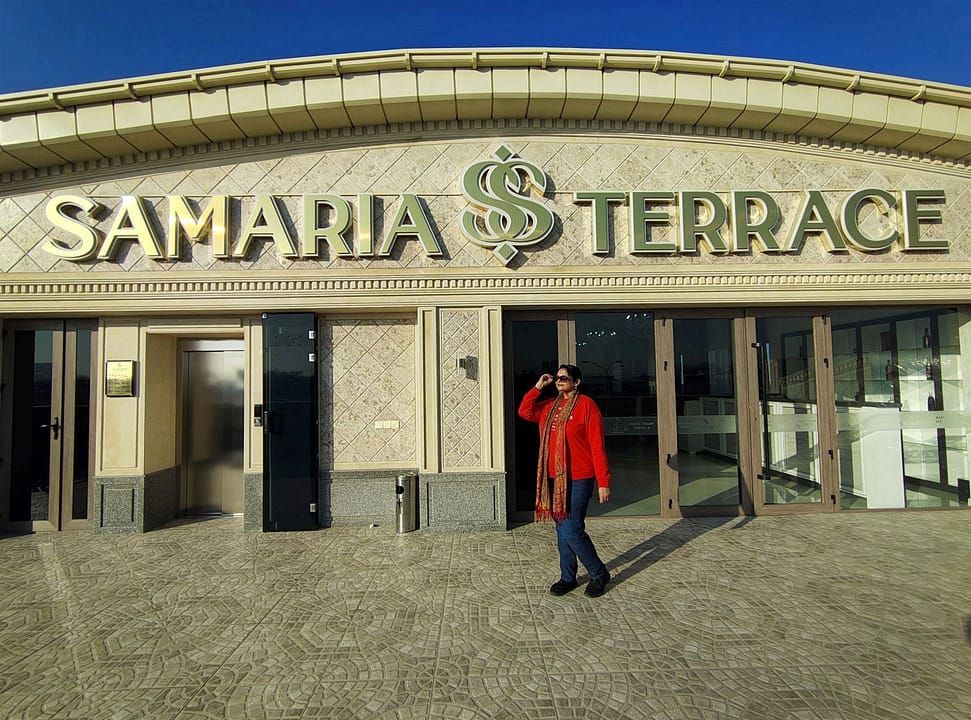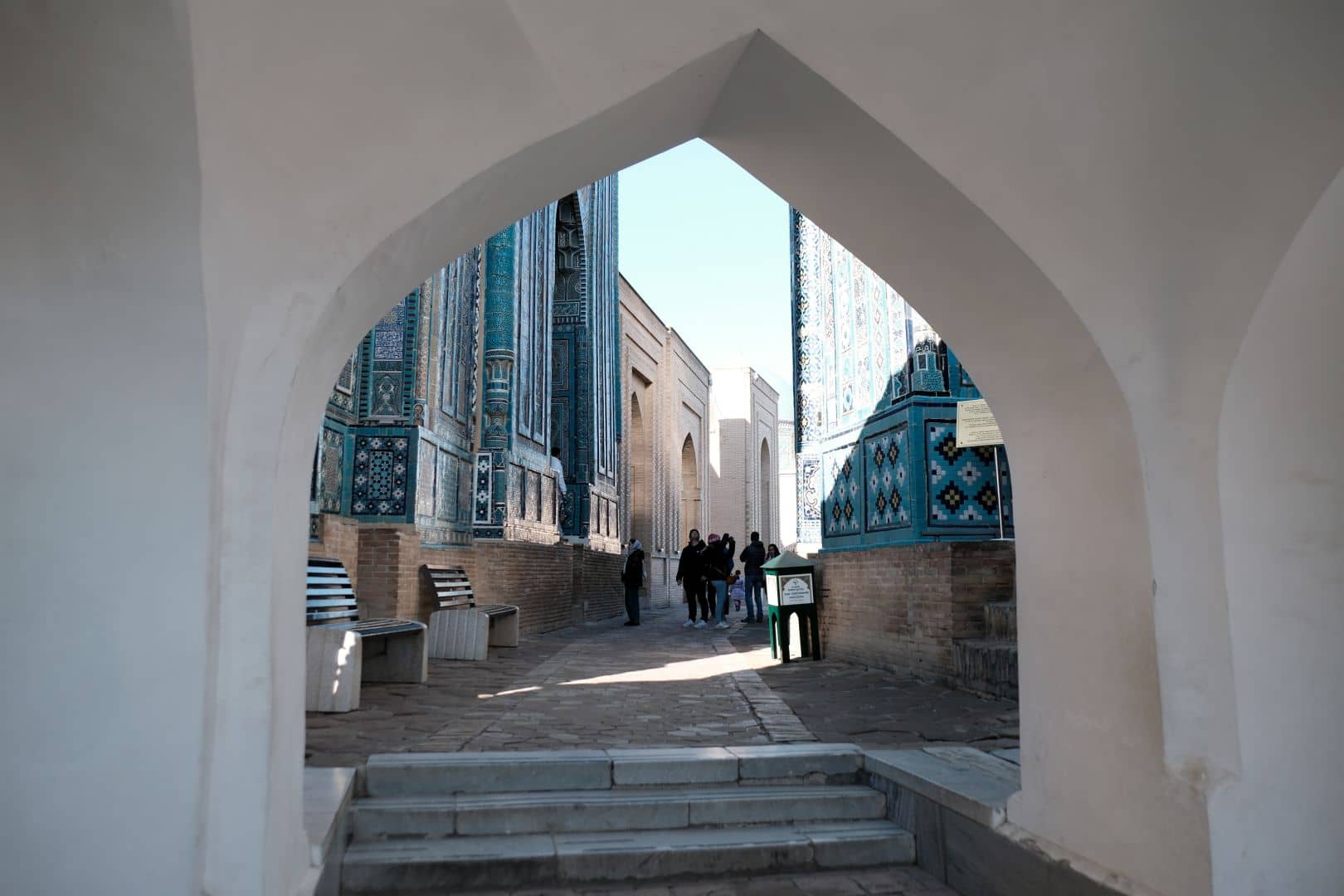We started the day with breakfast at the hotel’s terrace restaurant before heading out for another round of exploring. Nothing particularly stood out about the food or setting, but it did the job of fuelling us for the day ahead.

Observatory of Ulugbek
Our first stop of the day was the Observatory of Ulugbek, a testament to the scientific brilliance of a ruler ahead of his time. Unlike most of his predecessors, contemporaries, and successors, who were driven by military ambitions, Ulugh Beg was a scholar at heart, more captivated by the cosmos than by conquests. A visionary astronomer and mathematician, he built this observatory in the 15th century, making groundbreaking contributions to celestial studies. Standing among the remains of his work, it was fascinating to imagine the precision and dedication that went into mapping the heavens centuries ago. With a team of renowned astronomers, he compiled the Zij-i Sultani, a star catalogue so precise that some of its calculations remained accurate for centuries. The observatory housed an enormous sextant, partially underground, which allowed for incredibly precise measurements of celestial bodies. Though the original structure was later destroyed, the surviving remnants—especially the underground section of the sextant—offer a glimpse into the scientific genius of the era. A small museum nearby sheds light on Ulugh Beg’s contributions, a bittersweet reminder of a ruler whose passion for knowledge ultimately cost him his throne and his life. Despite his tragic end, his legacy endured, influencing astronomers far beyond Central Asia.





St. Daniel Mausoleum
Our next stop was the St. Daniel Mausoleum, a site steeped in history, mystery, and reverence. Perched on a tranquil hillside along the banks of the Siab River, the mausoleum is surrounded by rolling landscapes and ancient trees, offering a peaceful retreat from the city’s grandeur. Believed to house the remains of the biblical prophet Daniel—though legends differ on how he came to rest here—the site is a place of pilgrimage for Muslims, Christians, and Jews alike. The elongated tomb inside, stretching an astonishing 18 meters, only adds to the intrigue, as local lore claims it miraculously grows over time. Whether drawn by faith or fascinated by history, standing in this serene setting, with the soft murmur of the river below, felt like stepping into a story that has endured for centuries.



Afrosiyob Museum
Next, we made our way to the Afrosiyob Museum, a gateway to the ancient history of Samarkand. Located near the ruins of Afrosiyob, the oldest part of the city, the museum offers a glimpse into the region’s pre-Timurid past, dating back over 2,500 years. Its exhibits showcase artifacts from the Sogdian civilization, including pottery, coins, weapons, and household items that paint a vivid picture of life in early Samarkand.



One of the most remarkable displays is the famous seventh-century mural, discovered in the ruins of an ancient palace. This well-preserved fresco depicts a royal court scene with foreign envoys, tigers pulling a boat, and elements of daily life, reflecting Samarkand’s importance as a Silk Road hub. Walking through the museum, it was fascinating to see how the city had evolved over millennia, long before the grandeur of Timur’s empire took shape.
Shah-i-Zinda
Our final stop of the day was the breathtaking Shah-i-Zinda, a necropolisin the North-Eastern part of Samarkand, a place where history, spirituality, and architectural splendor converge. This “Living King” necropolis is a mesmerizing avenue of intricately decorated mausoleums, their vivid blue, turquoise, and gold tiles shimmering under the sun. As we walked through the narrow passageway flanked by towering tombs, each structure seemed to whisper stories of the nobles, scholars, and royals laid to rest here.




The most sacred shrine within the complex is believed to house the tomb of Qusam ibn Abbas, a cousin of the Prophet Muhammad, who, according to legend, brought Islam to the region. Over centuries, Timurid rulers and elites chose to be buried here, adding layers of artistic brilliance to the site. The intricate mosaics, Kufic inscriptions, and muqarnas domes are a true testament to the craftsmanship of their time.
Standing amidst these centuries-old mausoleums, it was impossible not to be awed by the sheer beauty and serenity of Shah-i-Zinda. With every step, the complex unfolded like a time capsule, revealing a piece of Samarkand’s soul—one that has endured through conquests, restorations, and the passage of time.

Leave a Reply